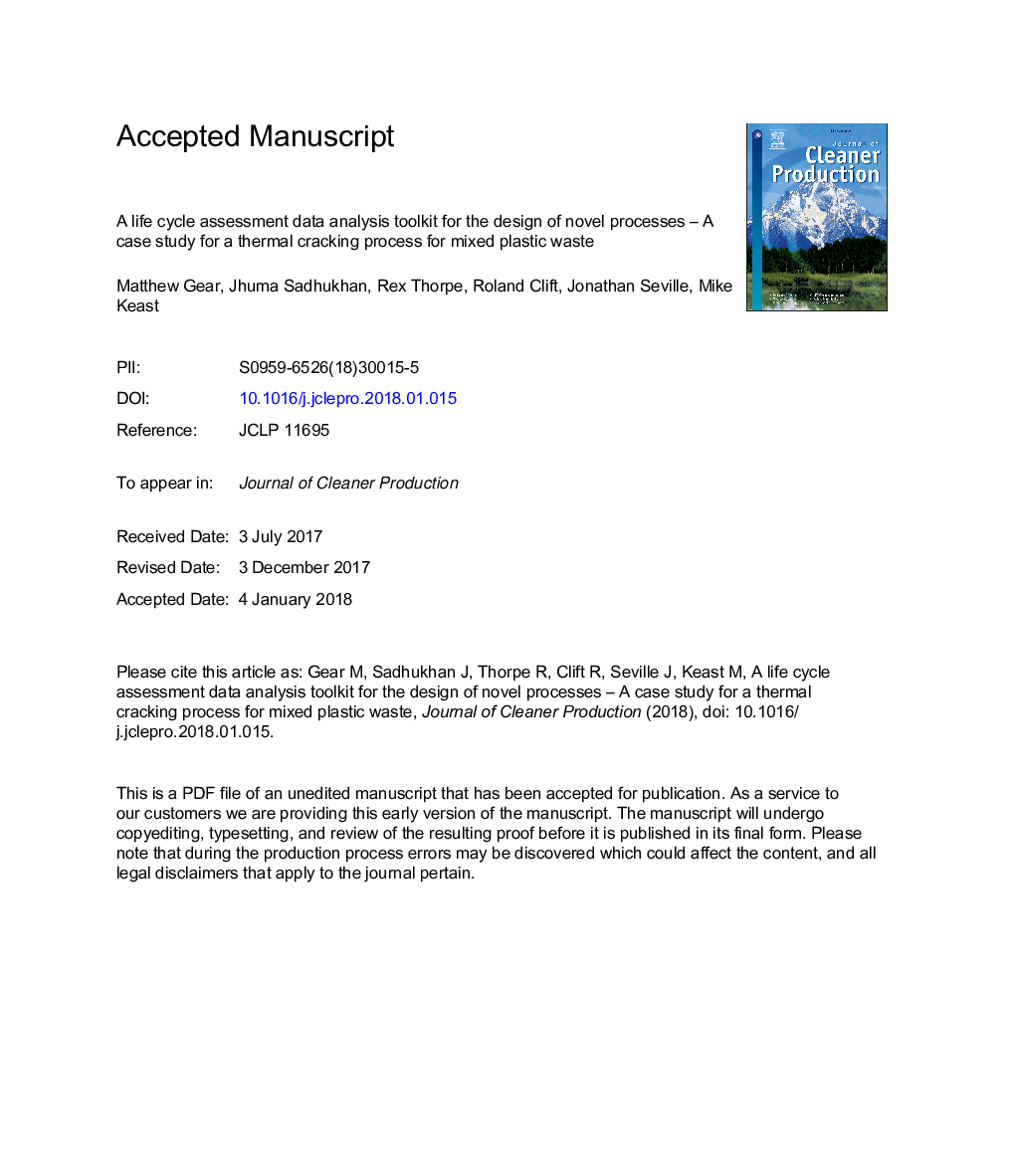| کد مقاله | کد نشریه | سال انتشار | مقاله انگلیسی | نسخه تمام متن |
|---|---|---|---|---|
| 8098077 | 1522073 | 2018 | 30 صفحه PDF | دانلود رایگان |
عنوان انگلیسی مقاله ISI
A life cycle assessment data analysis toolkit for the design of novel processes - A case study for a thermal cracking process for mixed plastic waste
ترجمه فارسی عنوان
ابزارهای تجزیه و تحلیل اطلاعات ارزیابی چرخه عمر برای طراحی فرآیندهای جدید - یک مطالعه مورد برای یک روند ترک خوردگی حرارتی برای زباله های پلاستیکی مخلوط
دانلود مقاله + سفارش ترجمه
دانلود مقاله ISI انگلیسی
رایگان برای ایرانیان
کلمات کلیدی
NCVMAETPFAETPTETPPOCPSMEGCVHTPGWPODP - RIPGross calorific value - ارزش کالری کمnet calorific value - ارزش کالری کمLCA - ارزیابی چرخه حیاتLife Cycle Assessment - ارزیابی چرخه عمر یا چرخه حیاتThermal cracking - ترک خوردگی حرارتیPlastic waste - زباله های پلاستیکیProcess design - طراحی فرآیندAcidification Potential - پتانسیل اسیدی شدنPhotochemical Ozone Creation Potential - پتانسیل ایجاد اوزون PhotochemicalOzone layer Depletion Potential - پتانسیل تخریب لایه اوزونhuman toxicity potential - پتانسیل سمیت انسانglobal warming potential - پتانسیل گرمایش جهانیEutrophication potential - پتانسیل یوتروفیزیکیPyrolysis - پیرولیز Selective catalytic reduction - کاهش کاتالیزوری انتخابی یا کاهش کاتالیستی انتخابیSCR - یکسوساز کنترلشده با سیلیکون
موضوعات مرتبط
مهندسی و علوم پایه
مهندسی انرژی
انرژی های تجدید پذیر، توسعه پایدار و محیط زیست
چکیده انگلیسی
The earlier in the development of a process a design change is made, the lower the cost and the higher the impact on the final performance. This applies equally to environmental and technical performance, but in practice the environmental aspects often receive less attention. To maximise sustainability, it is important to review all of these aspects through each stage, not just after the design. Tools that integrate environmental goals into the design process would enable the design of more environmentally friendly processes at a lower cost. This paper brings together approaches based on Life Cycle Assessment (LCA) including comparisons of design changes, hotspot analysis, identification of key impact categories, environmental break-even analysis, and decision analysis using ternary diagrams that give detailed guidance for design while not requiring high quality data. The tools include hotspot analysis to reveal which unit operations dominate the impacts and therefore should be the focus of further detailed process development. This approach enables the best variants to be identified so that the basic design can be improved to reduce all significant environmental impacts. The tools are illustrated by a case study on the development of a novel process with several variants: thermal cracking of mixed plastic waste to produce a heavy hydrocarbon product that can displace crude oil, naphtha, or refinery wax or be used as a fuel. The results justified continuing with the development by confirming that the novel process is likely to be a better environmental option than landfill or incineration. The general approach embodied in the toolkit should be applicable in the development of any new process, particularly one producing multiple products.
ناشر
Database: Elsevier - ScienceDirect (ساینس دایرکت)
Journal: Journal of Cleaner Production - Volume 180, 10 April 2018, Pages 735-747
Journal: Journal of Cleaner Production - Volume 180, 10 April 2018, Pages 735-747
نویسندگان
Matthew Gear, Jhuma Sadhukhan, Rex Thorpe, Roland Clift, Jonathan Seville, Mike Keast,
